Baichuan Liu
LuSNAR:A Lunar Segmentation, Navigation and Reconstruction Dataset based on Muti-sensor for Autonomous Exploration
Jul 09, 2024



Abstract:With the complexity of lunar exploration missions, the moon needs to have a higher level of autonomy. Environmental perception and navigation algorithms are the foundation for lunar rovers to achieve autonomous exploration. The development and verification of algorithms require highly reliable data support. Most of the existing lunar datasets are targeted at a single task, lacking diverse scenes and high-precision ground truth labels. To address this issue, we propose a multi-task, multi-scene, and multi-label lunar benchmark dataset LuSNAR. This dataset can be used for comprehensive evaluation of autonomous perception and navigation systems, including high-resolution stereo image pairs, panoramic semantic labels, dense depth maps, LiDAR point clouds, and the position of rover. In order to provide richer scene data, we built 9 lunar simulation scenes based on Unreal Engine. Each scene is divided according to topographic relief and the density of objects. To verify the usability of the dataset, we evaluated and analyzed the algorithms of semantic segmentation, 3D reconstruction, and autonomous navigation. The experiment results prove that the dataset proposed in this paper can be used for ground verification of tasks such as autonomous environment perception and navigation, and provides a lunar benchmark dataset for testing the accessibility of algorithm metrics. We make LuSNAR publicly available at: https://github.com/autumn999999/LuSNAR-dataset.
Group Buying Recommendation Model Based on Multi-task Learning
Nov 25, 2022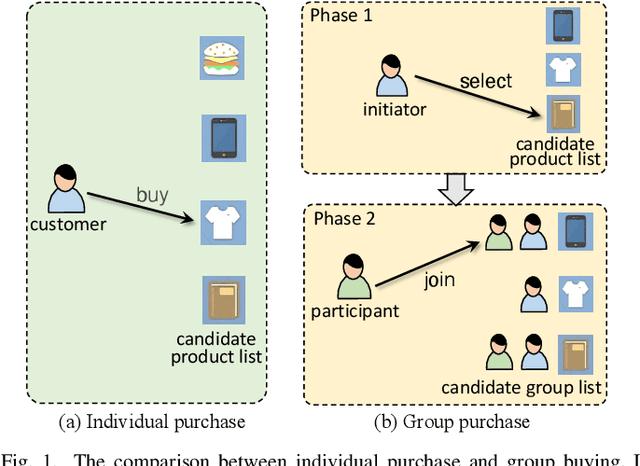
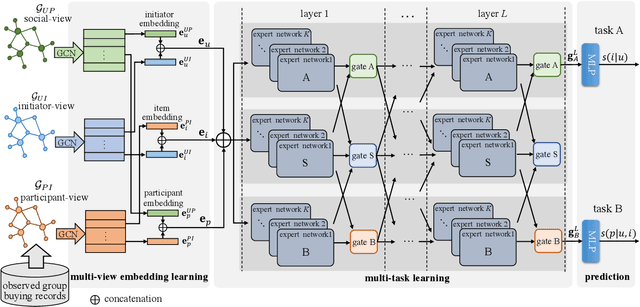
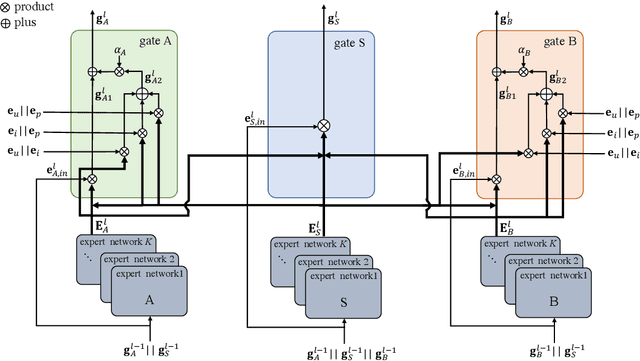
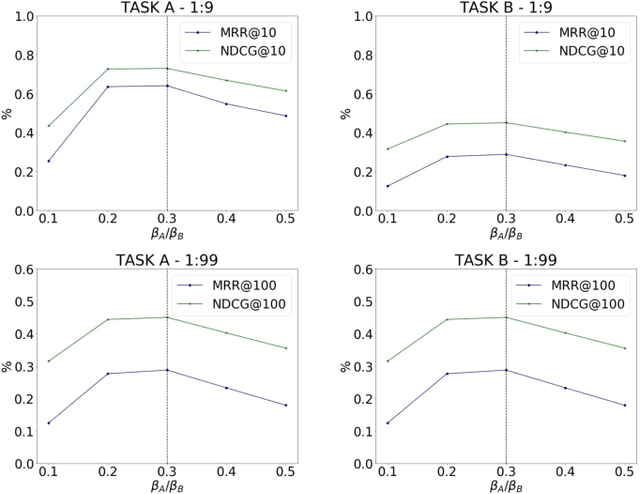
Abstract:In recent years, group buying has become one popular kind of online shopping activity, thanks to its larger sales and lower unit price. Unfortunately, research seldom focuses on recommendations specifically for group buying by now. Although some recommendation models have been proposed for group recommendation, they can not be directly used to achieve real-world group buying recommendation, due to the essential difference between group recommendation and group buying recommendation. In this paper, we first formalize the task of group buying recommendations into two sub-tasks. Then, based on our insights into the correlations and interactions between the two sub-tasks, we propose a novel recommendation model for group buying, MGBR, built mainly with a multi-task learning module. To improve recommendation performance further, we devise some collaborative expert networks and adjusted gates in the multi-task learning module, to promote the information interaction between the two sub-tasks. Furthermore, we propose two auxiliary losses corresponding to the two sub-tasks, to refine the representation learning in our model. Our extensive experiments not only demonstrate that the augmented representations in our model result in better performance than previous recommendation models, but also justify the impacts of the specially designed components in our model.
Improving Information Cascade Modeling by Social Topology and Dual Role User Dependency
Apr 07, 2022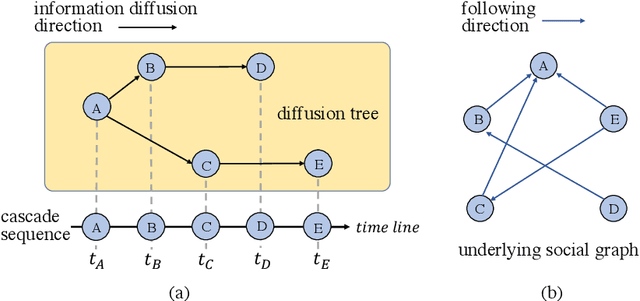

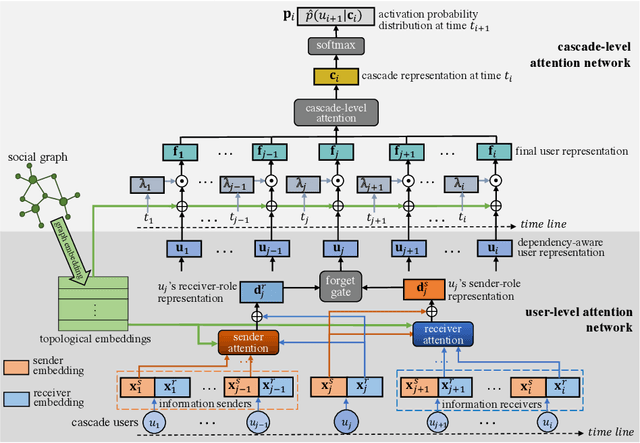

Abstract:In the last decade, information diffusion (also known as information cascade) on social networks has been massively investigated due to its application values in many fields. In recent years, many sequential models including those models based on recurrent neural networks have been broadly employed to predict information cascade. However, the user dependencies in a cascade sequence captured by sequential models are generally unidirectional and inconsistent with diffusion trees. For example, the true trigger of a successor may be a non-immediate predecessor rather than the immediate predecessor in the sequence. To capture user dependencies more sufficiently which are crucial to precise cascade modeling, we propose a non-sequential information cascade model named as TAN-DRUD (Topology-aware Attention Networks with Dual Role User Dependency). TAN-DRUD obtains satisfactory performance on information cascade modeling through capturing the dual role user dependencies of information sender and receiver, which is inspired by the classic communication theory. Furthermore, TANDRUD incorporates social topology into two-level attention networks for enhanced information diffusion prediction. Our extensive experiments on three cascade datasets demonstrate that our model is not only superior to the state-of-the-art cascade models, but also capable of exploiting topology information and inferring diffusion trees.
 Add to Chrome
Add to Chrome Add to Firefox
Add to Firefox Add to Edge
Add to Edge